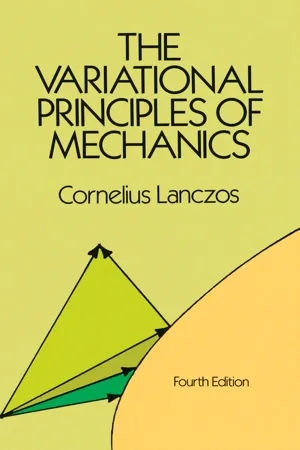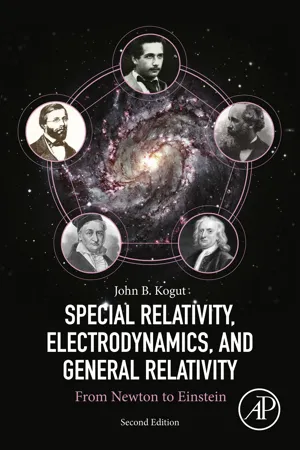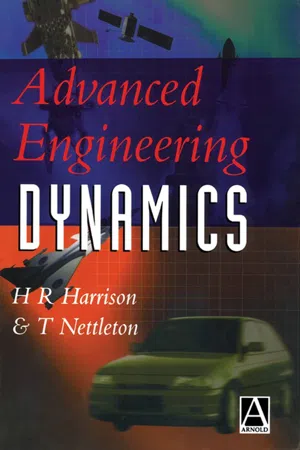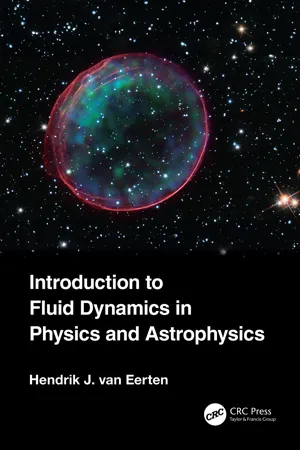Physics
Relativistic Dynamics
Relativistic dynamics is a branch of physics that describes the motion of objects at speeds approaching the speed of light. It incorporates the principles of special relativity, which include the concept of time dilation, length contraction, and the equivalence of mass and energy. Relativistic dynamics provides a more accurate description of motion at high speeds than classical mechanics.
Written by Perlego with AI-assistance
Related key terms
7 Key excerpts on "Relativistic Dynamics"
- eBook - ePub
- A.P. French(Author)
- 2017(Publication Date)
- CRC Press(Publisher)
The Lorentz transformations can then be regarded as a prescription for transforming the various components of a 4-vector from one set of axes to another—often described as the “mapping” of the vector onto various coordinate systems in the four-dimensional world. This way of representing the relativistic scheme of things is attractive in a formal sense, and can also be very useful if one has once learned to exploit it—which primarily means developing the appropriate fluency in matrix algebra. We shall not go any further with it here, however, since it is not essential and really adds nothing to the basic physics of relativity.Force in Relativistic Mechanics
In contrast to the Newtonian conception, it is easy to show that in relativity the quantity force, in general, is not codirectional with the acceleration it produces ... It is also easy to show that these force components have no simple transformation properties ... All these modifications, important as they are from the mathematical point of view, do not radically affect the conception of force. Yet an important point should be noted: on grounds of the rejection of an absolute simultaneity of two distant events, special relativity comes to the conclusion that action at a distance has to be excluded as a legitimate physical notion.Max Jammer, Concepts of Force (1957)In all of our discussion of Relativistic Dynamics so far, we have placed an almost exclusive emphasis on the use of the energy and momentum conservation laws for an isolated system of particles. We have tried to give some feeling for the variety of problems that can be discussed in these terms. But when all is said and done, this approach is not always the most convenient or useful. Many, many problems in dynamics can best be treated (and perhaps can only be efficiently treated) in terms of the motion of particles under the action of a given set of forces. Take the Rutherford scattering of α particles, for example. Granted that the force becomes vanishingly small at large separations between two particles (and it is this assumption that underlies all the calculations we have done in Chapter 6 and in this chapter), one can make perfectly correct statements about the relation between final directions and velocities of the colliding nuclei. But this does not tell us the probability that an α - eBook - ePub
- Cornelius Lanczos(Author)
- 2012(Publication Date)
- Dover Publications(Publisher)
General relativity cannot be properly treated without the field concept, which belongs to the realm of the mechanics of continua. Our following exposition is thus restricted to the kinematics and dynamics of Special Relativity. However, the dynamical law of General Relativity falls within the scope of Lagrangian and Hamiltonian dynamics and will be included in our discussions.2. Relativistic kinematics. In his fundamental paper Einstein1 introduced the following two postulates:(a) All reference systems that move relative to each other with constant velocity are equally legitimate for the description of nature, without any preference for any particular one of them.(b) The velocity of light c is the same universal constant, measured in any of these systems.The second postulate leads to the following apparent absurdity. Consider an observer B moving relative to A with the velocity of light c. He emits a light signal in the direction of his own motion which moves relative to him with the velocity c. According to our common notions the velocity of this signal relative to A should be 2c, while the second postulate of relativity demands that it is c. Hence c = 2c, which is self-contradictory. This is no longer so, however, if we give up the intuitive notion of a time t which is the same for both observers A and B.According to Einstein we should not prejudice in advance the transformation equations which exist between the coordinates of the system A and those of the system B. Assuming that the motion of B relative to A occurs in the X-direction, we putwhere a, β, γ, δ are constants, since we do not want to lose the linearity of the transformation. But by abandoning the equation t = t′ (which corresponds to the choice γ = 0, δ = 1) we have gained the freedom of two additional constants.All formulae of special relativity gain greatly in simplicity, if we agree to measure the time in such units that the velocity of light becomes unity (this means that the usual time t is replaced by t/c). If we want to return to the formulae involving our ordinary time t, we have merely to change all t to ct and all v to v/c. We shall frequently make use of this simplification and thus agree that the invariant velocity of light has the numerical value c = - eBook - ePub
- Andrew Rex(Author)
- 2014(Publication Date)
- CRC Press(Publisher)
Chapter 9 Relativity Relativity is one of the most important and fascinating fields of study within physics. It’s generally split into two subfields—special relativity and general relativity—both of which were developed by Albert Einstein in the early twentieth century. Relativity accounts for how events are viewed from different frames of reference, when those frames of reference are moving with respect to one another or in strong gravitational fields. It also accounts for how light will appear to observers in different frames of reference. Many of the effects predicted by the theory of relativity are contrary to the predictions of classical physics and to perceptions based on everyday experience. These striking and sometimes shocking predictions have been verified repeatedly by experimental evidence. Probably the most famous prediction of special relativity is the equivalence of mass and energy, expressed in the formula E = mc 2. This equivalence manifests itself in many ways, particularly in atomic and nuclear physics (Chapter 7) and in the study of fundamental particles (Chapter 8). The implications are far reaching and include the production of nuclear energy and nuclear weapons. What’s the Difference between Special Relativity and General Relativity? Special relativity accounts for how material objects and light are viewed by observers traveling in different frames of reference, in constant, nonaccelerated motion with respect to one another. The fact that the speed of light is the same for observers in all reference frames is of fundamental importance. It leads to correct predictions about how the different observers measure the positions, lengths, and velocities of objects, and how they measure the passage of time - eBook - ePub
- Michael Esfeld, Dirk-Andre Deckert(Authors)
- 2017(Publication Date)
- Routledge(Publisher)
But this does not imply that when it comes to representing change, it is possible to obtain a representation that is both simple and informative about the change that actually occurs on the basis of initial conditions that consist in parameters attributed to the configuration of matter points at a given time. The correlated motions of quantum particles represented by means of an entangled wave function enable such a representation and are the reason why we have written down the fundamental dynamics of QFT in a non-relativistic manner in Chapter 4 (in the sense that this dynamics requires a notion of objective simultaneity). Relativity physics challenges this manner of representing change. In relativistic interactions, it is dynamical parameters situated in the past (and possibly also in the future) that capture the evolution of a given configuration, whereby the distance relations in the given configuration are not relevant for the dynamical structure. That is why relativity physics not only introduces a new dynamical structure but also challenges the ontology as given by the two mentioned axioms, because this ontology is built on matter points that are individuated by the distance relations in a given configuration and the change in these relations. In this chapter, we address this challenge. We first consider classical electrodynamics, which is the first relativistic theory, arguing that fields are part of the dynamical structure of this theory instead of new elements of the ontology and discussing an alternative theory of classical electrodynamics that works with direct particle interactions (i.e. the Wheeler-Feynman theory) (section 2). We then argue in general terms that the minimalist ontology pursued in this book remains a cogent stance also when it comes to relativistic physics (section 3) and show how Super-Humeanism combined with this minimalist ontology is a valid option also for general relativistic physics (section 4) - eBook - ePub
Special Relativity, Electrodynamics, and General Relativity
From Newton to Einstein
- John B. Kogut(Author)
- 2018(Publication Date)
- Academic Press(Publisher)
Chapter 6Relativistic Dynamics
First Steps
Abstract
Einstein's relation E = mc 2 is derived from a “Gedanken” experiment. The generalization of energy and momentum to Relativistic Dynamics is obtained from the analysis of an inelastic collision where energy–momentum conservation and frame independence are required. The relativistic generalization of Newton's second law, which is consistent with the two postulates of relativity, is obtained. The energy–momentum four-vector is introduced and its transformation property under boosts is established. Covariant and contravariant four-vectors and tensors are introduced. The usefulness of invariants is stressed. Applications to relativistic collisions, where particles are created and destroyed, are discussed.Keywords
Conservation laws; Contravariant; Covariant; Energy–momentum; Four-vectors; Mössbauer effectContents6.1 Energy, Light, and E = mc 26.2 Patching Up Newtonian Dynamics—Relativistic Momentum and Energy 6.3 Relativistic Force and Energy Conservation 6.4 Energy and Momentum Conservation, and Four-Vectors 6.5 Focusing on Four-Vectors, Tensors, and Notation 6.6 Collisions and Conservation Laws—Converting Mass to Energy and Energy to Mass, Producing and Destroying Particles Problems References6.1. Energy, Light, and E = mc 2
We have spent all our time so far discussing how measurements of space–time coordinates transform between inertial frames in such a way that there is a universal speed limit. Has this been an empty exercise? We need to see that we can write down a scheme of relativistic dynamics - eBook - ePub
- H. Harrison, T. Nettleton(Authors)
- 1997(Publication Date)
- Butterworth-Heinemann(Publisher)
9Relativity
9.1 Introduction
In this chapter we shall reappraise the foundations of mechanics taking into account Einstein’s special theory of relativity. Although it does not measurably affect the vast majority of problems encountered in engineering, it does define the boundaries of Newtonian dynamics. Confidence in the classical form will be enhanced as we shall be able to quantify the small errors introduced by using Newtonian theory in common engineering situations.The laser velocity transducer employs the Doppler effect which, for light, requires an understanding of special relativity. The form of the equations derived for cases where the velocities of the transmitter and/or the receiver are small compared with that of the signal is the same for both sound and light. This will be discussed later.We shall also consider the definition of force. It is of note that relativistic definitions are such that they encompass the Newtonian. The general theory of relativity raises some interesting questions regarding the nature of force, but these do not materially affect the equations of motion already derived.9.2 The foundations of the special theory of relativity
It is not our intention to retrace the steps leading to the theory other than to mention the most significant milestones. In the same way that Isaac Newton crystallized the laws of mechanics which have formed the basis for the previous chapters in this book, Albert Einstein provided the genius that solved the riddle of the constancy of the speed of light.James Clerk Maxwell’s equations for electrodynamics predicted that all electromagnetic waves travelled at a constant speed in a vacuum. If the value of the speed of light, c - Hendrik Jan van Eerten(Author)
- 2024(Publication Date)
- CRC Press(Publisher)
8 Fluid Dynamics in Special RelativityDOI: 10.1201/9781003095088-8Relativistic fluid dynamics is becoming increasingly relevant in astrophysics, where a growing range of phenomena require the acknowledgement of at minimum special relativity if they are to be modelled successfully. Astrophysical flows close to black holes, where highly energetic jets can be launched during the process of accretion (which we will discuss in more depth in Chapter 11 ) will even require general relativity to account for the distorted spacetime environment. Examples of relativistic fluid dynamics can be found across a range of scales, both in mass and velocity. On the largest scales, active galactic nuclei (AGN) containing central black holes of 107 solar masses and more are able to sustain jets with Lorentz factors of about 10–30 (with the Lorentz factor γ defined in the usual manner in terms of flow velocity v and light speed c, i.e.γ ≡; we will recap the key points of special relativity and ‘officially’ introduce the Lorentz factor shortly). When pointed directly towards the observer, the jets associated with AGN are known as blazars. More sudden releases of energy due to interaction with supermassive black holes are triggered by the tidal disruption of individual stars that venture too deep into the black hole's gravitational field. Since the discovery of tidal disruption event Swift J1644+57 in 2011, we know that in this case, too, a relativistic outflow can sometimes be launched.( 1 −v 2/c 2)− 1 / 2On the scale of stellar mass black holes, jets produced by a sub-class of X-ray binaries labelled microquasars have Lorentz factors of a few, withγ ∼ 5
Index pages curate the most relevant extracts from our library of academic textbooks. They’ve been created using an in-house natural language model (NLM), each adding context and meaning to key research topics.






